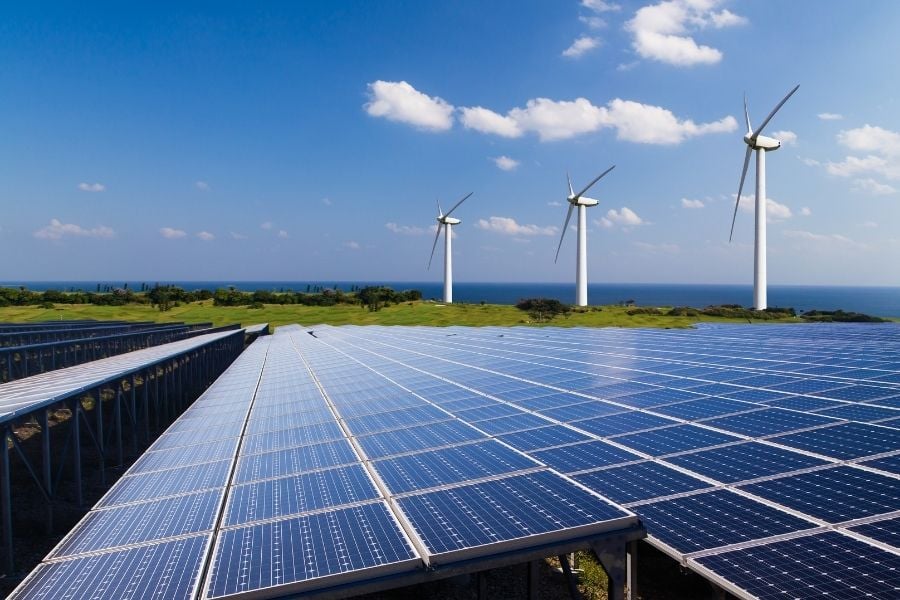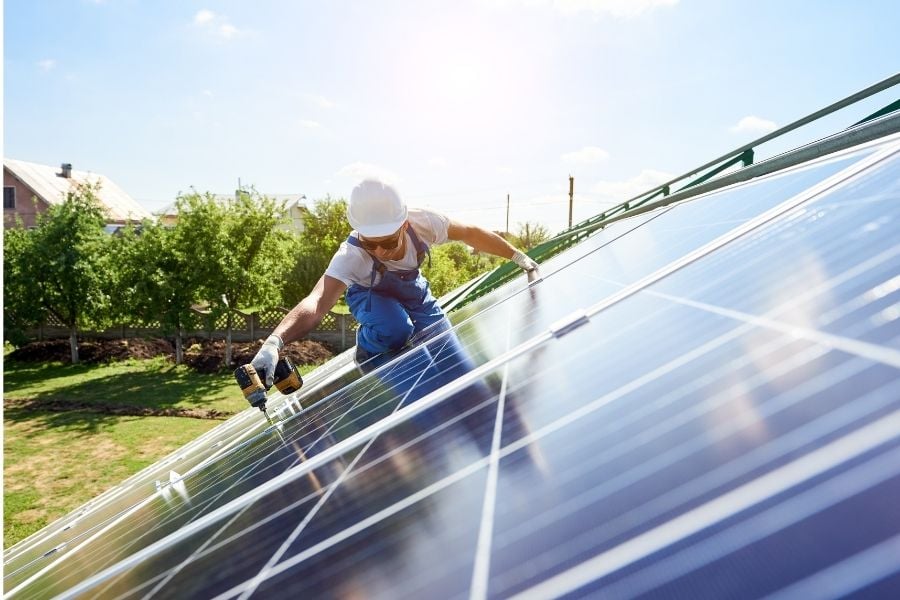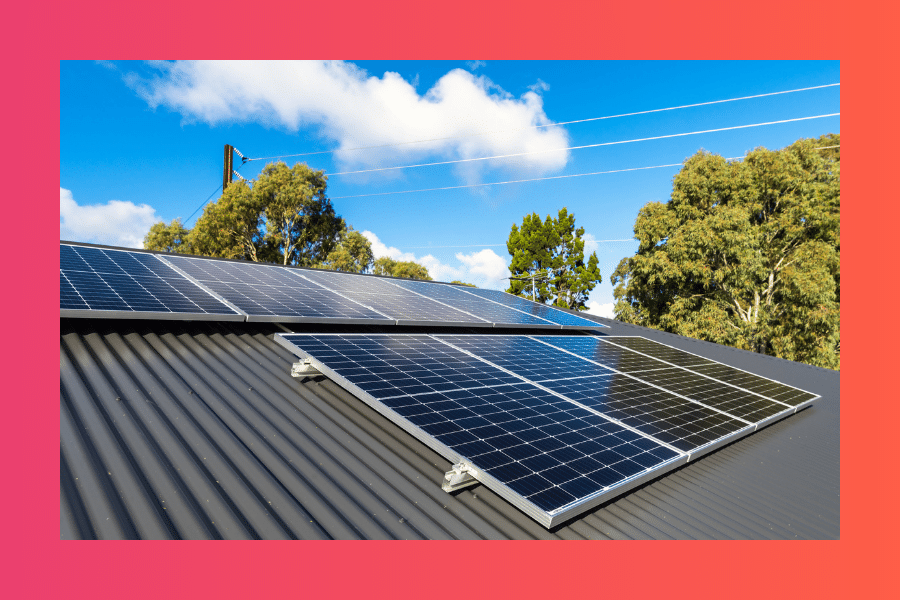Comparing Australia and Canada in Going Green
Of all the countries in the world which Australia is comparable with, arguably Canada is the closest. Yes, New Zealand is the nearby neighbour and...
3 min read
![]() Solar Trust Centre Team
:
Sep 9, 2021 7:00:00 PM
Solar Trust Centre Team
:
Sep 9, 2021 7:00:00 PM
Australia has always known it would build stronger ties throughout Asia. There are many reasons for this, but central is the shared cultural and economic links that connect a nation of 25 million into a region of over 4.5 billion. Yet just as these ties are still growing, there’s also new links being built. Like in the renewable energy sector. It’s here that plans for the Asian Renewable Energy Hub [AREB] command attention in Australia and around the region.
The AREB is an immensely exciting proposal. Not only for what it offers Australia and wider Asia but also for what it signals about the future of renewable energy in the nation. Let’s look now at the ins and outs of this idea.
AREB’s plan provides for the creation of a colossal site in Western Australia’s Pilbara region. It will feature 26GW of wind and solar generation in total, for domestic use and export to Asian nations. Alongside its remarkable promise for wind and solar, AREB also intends to become a leading producer of green hydrogen. With initial development work and a site search beginning in 2014, in 2020 the Western Australian government gave approval for the first 15GW phase of the plan. If all goes according to their current timeline, construction is set to begin in 2026 with the first exports to start in 2027/2028.
At least 3GW of this energy generated will be for energy users in the Pilbara, the iconic region that until now has most famously been known in energy circles for its connection with mining. With this bold plan, AREB seeks to go some way to changing that. In turn, to retain a strong link between the project and its local area once it’s up and running.

The project has brought a number of notable stakeholders to the table. Intercontinental Energy, CWP Global, Vestas, and Pathways Investments are all playing a role. They aspire to see with their idea a vision not only for the creation of a new renewable energy hub but a number of substantial benefits along with it.
Alongside the renewable site itself, the team behind AREB contends the project will create new supply chain facilities that will manufacture and assemble equipment required for its establishment. They say over 20,000 direct and indirect jobs would be made during the construction period. Additionally, with the recognition AREB will be built upon the traditional lands of the Nyangumarta People, active engagement between the AREB team and the Traditional Owners has seen the latter participate in site ecological studies. The team has also indicated the project offers immense opportunity for the creation of new revenue and jobs for the Traditional Owners.
Projects like AREB illustrate Australia’s renewable energy potential in the 2020s. Just as AREB appears to be going from strength to strength, there’s also a recognition Australia is longing for more projects like this. The outbreak of a once-in-a-century pandemic notwithstanding – including how it essentially caught all authorities and industries off-guard last year – the response to Covid-19 has also been pretty incredible. While there’s certainly still a long way to go in the recovery, many Australians have been able to return to school, their workplaces, and something resembling normal life pre-pandemic.
But even so, just as those who are still doing it tough must be kept in mind, the pandemic is far from over. This means the potential for disruption and delay due to it certainly remains. The challenge for Australia in this environment is to factor in this potential, but also not allow these opportunities to slip away. Yes, it may sound unimaginable that such a circumstance could occur.
But while there’s no disputing the fact Australia could be a renewable energy superpower, in reality, there’s been discussions for years – indeed decades – regarding Australia’s ability to capitalise on its natural resources. Of course, there should still be the potential to build more mass solar installations in a far off future if we don’t in the 2020s, but doing so in this decade could help see Down Under soar to the top when it comes to being an energy-exporting country. That’s why AREB’s advancement is so wonderful – and why we should all be keen to see more projects like it.

There’s no doubt the 2020s are set to usher in a renewable energy revolution. Already we’re seeing a clear-cut indication of that with the immense growth of rooftop solar installations. Yet it’s also true that we’ve only just begun to scratch the surface of this potential in Australia. In turn, it’s an unfortunate reality the outbreak of the Covid-19 pandemic has certainly become a real drag on business confidence and national ambition. But the pandemic won’t last forever, and Australia’s got a big solar agenda to pursue.
Projects like AREB offer a window into the amazing opportunities that await the Great Southern Land if the country can get all its ducks in a row when it comes to realising its renewable energy potential on a nationwide scale. Because just as AREB’s idea and the progression of it are worth keeping a keen eye on, so too are there some other exciting plans in the works like Sun Cable’s Australia-ASEAN Power Link.
The progress of these projects offers us a beacon that we can follow into the future of the 2020s, looking forward to the growth of a renewables industry in Australia that’ll make a tremendous contribution to both economic and environmental sustainability. And with this, a brighter future for Australia as it looks to chart a course into a post-pandemic world. All the more reason to encourage other projects like AREB to make their way into existence!
Solar Trust Centre provides the latest information and stories on solar and renewable energy. Check this page out for more.
.jpg)
Of all the countries in the world which Australia is comparable with, arguably Canada is the closest. Yes, New Zealand is the nearby neighbour and...
1. How to Know a Reputable Solar Installer It’s wise to select a solar installer carefully. You don’t want to hire someone who makes mistakes that...

In 2022 Australia is further solidifying its status as a world-leading country when it comes to embracing solar power, and South Australia has...